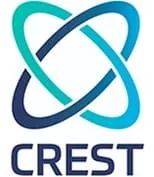
Cyber Risk Assessments
When it comes to data breach prevention, what you don’t know can hurt you. Your company faces IT risk daily—whether you’re fending off internal threats or enhancing protection against external intrusions.
How well are you balancing your need to lock down data with tighter security controls, while providing your team with easy access to the information that drives your success? You can never be sure of your security stance unless you’re conducting periodic security assessments.
Cyber Risk Assessments - What's Included?
Our Cybersecurity Risk Assessments include a detailed review of the information security program—from policies and procedures to technical controls, including people, processes and technologies. We conduct a series of interviews with internal stakeholders, across both technical and business teams, to identify areas for improvement to mature the organization's information security program, using the NIST Cybersecurity framework as guidance.
The objective is to review the maturity of an organization’s information security program, with an emphasis on its ability to defend against and respond to modern cybersecurity threats affecting its information assets and mitigate the risk of suffering a security breach.
At the conclusion of an assessment, clients will receive a summary report designed to communicate security posture to senior management, including an assessment of the organization’s maturity level and an outline of critical risks identified. Additionally, a technical details report will be provided, with relevant and actionable recommendations prioritized by likelihood, impact and overall risk so the organization knows what to remediate first.
At Kroll, we apply years of data breach prevention expertise to our cyber risk assessments. Our experts are Certified Information Systems Auditors, Certified Information Security Managers, Certified Information Systems Security Professionals and Certified Ethical Hackers. They are ex-FBI agents, CTOs, CISOs, IT and security directors, cyber investigators, infrastructure managers, forensic computer scientists and networking professionals—people who speak the same language as your internal IT staff and who can perform the in-depth analysis your busy teams don’t have the time or resources to conduct.
Kroll’s enterprise security risk management experts also offer threat and vulnerability assessments, which are routinely conducted at corporate headquarters, executive residences, health care facilities, hospitals, schools, universities, research and development labs, manufacturing facilities, distribution centers and more.
Security Assessments Accurately Define Your Potential for Exposure
Performing security assessments for global clients from nearly every industry and government agency, Kroll’s information security experts employ tested techniques, industry best practices and the best of commercial and proprietary technologies to:
- Identify, monitor and analyze information-related vulnerabilities effectively
- Help you determine methods to manage or resolve data security risks
- Spot potential data privacy and security compliance issues
- Prioritize remediation steps into an effective plan based on your company’s specific goals, schedule and budget
Information Risk Assessments: One Size Does Not Fit All
At Kroll, we recognize the key to successful risk assessment and data breach prevention is achieving and maintaining the right level of security for your organization. Our data breach prevention experts offer a full range of internal and external risk assessments to evaluate your systems, applications and processes for a variety of vulnerabilities.
Our range of assessments includes:
Baseline Security Risk Review
Cybersecurity Risk Assessment
Annual Risk Assessments
HIPAA Risk Analysis and Security Assessment
Ransomware Preparedness Assessments
Incident Response Preparedness Assessment
Technical Security Assessments

Microsoft 365 Email Security Assessments
Identifies areas for improvement in a client’s email security defenses. Check out this M365 business email compromise case study.

Active Directory Security Assessments
Reviews the current security status of Active Directory deployment to mitigate possible attack paths attackers could take advantage of.

Microsoft Azure Review
Focuses on identity and access management, network and application security, storage account and database security, virtual machine security, auditing, logging and alerting.

Google Workspace Email Security Assessments
Focuses on Workspace configuration for email, drives and content compliance, policies for phishing prevention, workstation defenses and end-user awareness.

AWS Cloud Security Assessments
Reviewing AWS security groups, identity and access management (IAM), access control lists, relational databases, EC2 instance lifecycles and more.

Google Cloud Security Assessments
Uncovers potential gaps in configuration and document storage in addition to IAM, logging, virtual machines and the Kubernetes engine.

VMWare Security Assessments
Designed to harden environments by ensuring security best practices are in place around virtual machines, storage, configurations, management and monitoring.

Salesforce Security Assessments
Focuses on identity and access management, authentication, encryption, data sharing, logging, auditing, phishing and malware protection.
Industry Accreditation
CREST has accredited Kroll as a global Penetration Testing provider.

Connect With Us


Cyber and Data Resilience
Incident response, digital forensics, breach notification, security strategy, managed security services, discovery solutions, security transformation.
Virtual CISO (vCISO) Advisory Services
Kroll’s Virtual CISO (vCISO) services help executives, security and technology teams safeguard information assets while supporting business operations with augmented cyber expertise to reduce business risk, signal commitment to data security and enhance overall security posture.
Microsoft 365 Security Assessment
Fortify your defenses and maximize your technology investment with a Microsoft 365 security assessment from Kroll.
Cyber Litigation Support
Whether responding to an investigatory matter, forensic discovery demand, or information security incident, Kroll’s forensic engineers have extensive experience providing litigation support and global eDiscovery services to help clients win cases and mitigate losses.
Data Protection Officer (DPO) Consultancy Services
Kroll's data privacy team provide DPO consultancy services to help you become and stay compliant with regulatory mandates.
Cyber Governance and Strategy
Manage cyber risk and information security governance issues with Kroll’s defensible cyber security strategy framework.
Cyber Risk Retainer
Kroll delivers more than a typical incident response retainer—secure a true cyber risk retainer with elite digital forensics and incident response capabilities and maximum flexibility for proactive and notification services.
24x7 Incident Response
Kroll is the largest global IR provider with experienced responders who can handle the entire security incident lifecycle.
Notification, Call Centers and Monitoring
Kroll’s data breach notification, call centers and monitoring team brings global breach response expertise to efficiently manage regulatory and reputational needs.
A Phased Approach: Thoughts on EU AI Act Readiness
by Dan Rice

What Is Cloud Penetration Testing and Why Do You Need It?
by Alex Cowperthwaite

Securing Microsoft 365: Avoiding Multi-factor Authentication Bypass Vulnerabilities
by Krystina Lacey

LLM Risks: Chaining Prompt Injection with Excessive Agency
by Alex Cowperthwaite, Pratik Amin, Kassidy Marsh

Kroll Appoints Katherine Keefe to Lead Global Cyber Insurance Industry Capabilities

Kroll Becomes Relativity Gold Provider Partner

Kroll Recognized in 2024 Gartner Market Guide for Digital Forensics and Incident Response Retainer Services for the Fifth Consecutive Year

Kroll Expands AI Risk Consulting Services

Webinar - How to Adopt DORA’s Threat Led Penetration Testing Requirements

Kroll at RSAC 2025 Conference
Join Kroll experts at RSAC 2025 in San Francisco. Stop by booth 842 in the South Expo Hall to meet our team.

